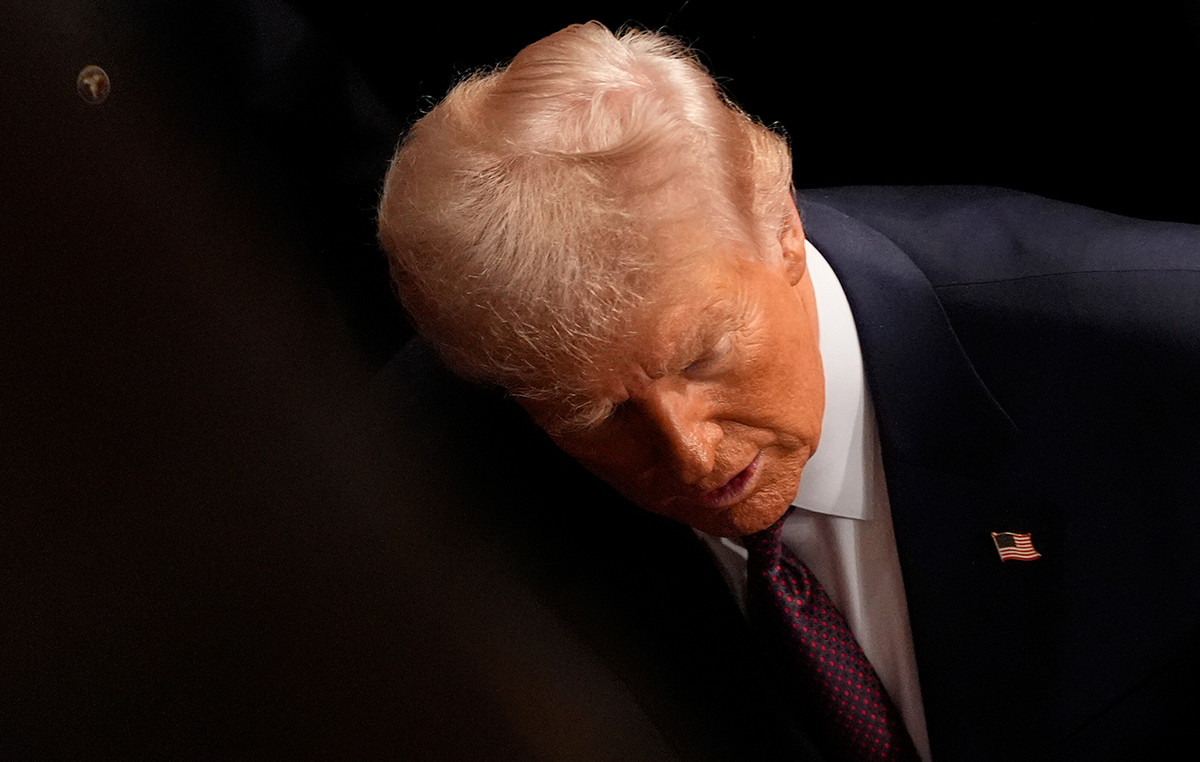- The AUD/USD falls below 0.6480 while betting for a RBA rates cut in July drag the Australian dollar downward
- The US dollar remains firm while Trump delays the decision on bombing to Iran, but the tensions in the Middle East support the demand for safe refuge.
- The AUD/USD operators expect Daly’s speech from the FED and the June PMI data, key weekend events that could guide the address of next week.
The Australian dollar (AUD) is still under pressure against the US dollar (USD) on Friday, with the AUD/USD quoting about 0.6480 at the time of writing.
The feeling of global risk continues to deteriorate, supporting the demand for safe refuge for the US dollar, while the internal weakness and moderate expectations of the Bank of the Australian Reserve (RBA) weigh even more on the Australian dollar.
Geopolitical uncertainty remains a dominant issue after the US president, Trump delayed a decision on the direct participation of the US in the Israel-Iran conflict.
While the announcement of a two -week period relieved immediate fears, persistent volatility in the region has kept the markets in tension and has sustained the demand of the US dollar.
Meanwhile, the cautious tone of the Federal Reserve (FED) after its June policy meeting reaffirmed the expectations of a gradual and data -dependent path for fees.
Combined with high oil prices driven by tensions in the Middle East, this hard line background has reinforced concerns about inflation and has strengthened the argument for rates to remain high in the long term.
In the internal field, the Australian treasurer, Jim Chalmers, speaking on Tuesday, said persistent structural challenges in productivity, resilience and fiscal sustainability. He called for long -term reforms, including fiscal policy, to strengthen the country’s economic base. Their comments are produced while the markets increasingly discourage a possible RBA rates cut in July, particularly in recent recent data.
The argument in favor of a relief was reinforced with the May Employment Report of Australia, published on Thursday, which showed a surprising 2.5K fall in the total number of jobs, below the forecasts of a 25K increase. While full -time employment increased by 38.7K, it was compensated by a 41.1K drop in part -time jobs.
The unemployment rate remained stable at 4.1%, but the weak main figure dragged the AUD/USD to a minimum of two weeks, reinforcing the moderate change in the expectations of the RBA.
Looking ahead, operators will monitor two key events during the weekend that could influence the direction of the AUD/USD.
On Sunday, the president of the Fed of San Francisco, Mary Daly, is scheduled to speak at the 100th Annual Conference of the West Economic Association. His comments on inflation or policy perspectives could influence the expectations of a Fed fees in September and affect the feeling of the US dollar.
Later that night, the markets will change their approach to the publication of the June Purchase Management Index (PMI) of Australia Global S&P, which covers the composite, manufacturing and service sectors. As early indicators of the economic impulse, the reports, especially the PMI of services, will be observed closely in search of signs of strength or internal weakness. Soft readings could reinforce the calls to a RBA cut, while stronger data could offer temporary support to the Australian dollar.
Faqs Australian dollar
One of the most important factors for the Australian dollar (Aud) is the level of interest rates set by the Australian Reserve Bank (RBA). Since Australia is a country rich in resources, another key factor is the price of its greatest export, iron mineral. The health of the Chinese economy, its largest trading partner, is a factor, as well as inflation in Australia, its growth rate and commercial balance. The feeling of the market, that is, if investors are committed to more risky assets (Risk-on) or seek safe shelters (Risk-Off), it is also a factor, being the positive risk-on for the AUD.
The Australian Reserve Bank (RBA) influences the Australian dollar (AUD) by setting the level of interest rates that Australian banks can lend to each other. This influences the level of the interest rates of the economy as a whole. The main objective of the RBA is to maintain a stable inflation rate of 2% -3% by adjusting the interest rates or the low. Relatively high interest rates compared to other large central banks support the AU, and the opposite for the relatively low. The RBA can also use relaxation and quantitative hardening to influence credit conditions, being the first refusal for the AU and the second positive for the AUD.
China is Australia’s largest commercial partner, so the health of the Chinese economy greatly influences the value of the Australian dollar (Aud). When the Chinese economy goes well, it buys more raw materials, goods and services in Australia, which increases the demand of the AU and makes its value upload. The opposite occurs when the Chinese economy does not grow as fast as expected. Therefore, positive or negative surprises in Chinese growth data usually have a direct impact on the Australian dollar.
Iron mineral is the largest export in Australia, with 118,000 million dollars a year according to data from 2021, China being its main destination. The price of iron ore, therefore, can be a driver of the Australian dollar. Usually, if the price of iron ore rises, the Aud also does, since the aggregate demand of the currency increases. The opposite occurs when the price of low iron ore. The highest prices of the iron mineral also tend to lead to a greater probability of a positive commercial balance for Australia, which is also positive for the AUD.
The commercial balance, which is the difference between what a country earns with its exports and what it pays for its imports, is another factor that can influence the value of the Australian dollar. If Australia produces highly requested exports, its currency will gain value exclusively for the excess demand created by foreign buyers who wish to acquire their exports to what you spend on buying imports. Therefore, a positive net trade balance strengthens the AUD, with the opposite effect if the commercial balance is negative.
Source: Fx Street
I am Joshua Winder, a senior-level journalist and editor at World Stock Market. I specialize in covering news related to the stock market and economic trends. With more than 8 years of experience in this field, I have become an expert in financial reporting.







